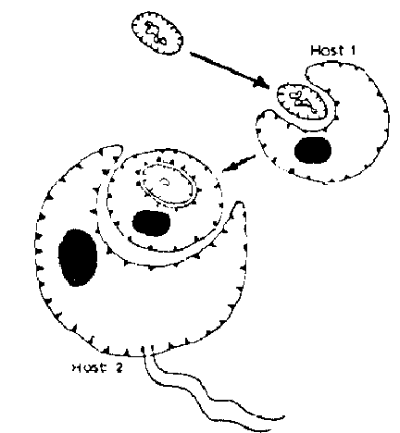 |
Science Frontiers ONLINE No. 47: Sep-Oct 1986 |
|
|
Heretical Evolutionary Theory
"Over the past 15 years, away from the limelight of mainstream evolutionary argument, cell biologists have been debating a concept that is fundamental to our understanding of how cells evolved. It is the proposal that some of the structures that are found in the larger cells of animals, plants and fungi (eukaryotic cells) are the descendants of simpler bacteria-like organisms (prokaryotic cells) that had at some stage entered into an intracellular existence, or endosymbiosis. The idea is not a new one, but only in the light of modern experimental evidence has it become acceptable to many biologists. If the hypothesis is correct, then virtually all the major groups of familiar organisms originated 'suddenly' through endosymbiotic associations."
Following this lead paragraph, with its paradigm-shaking final sentence, are three pages summarizing the biological evidence favoring evolution by endosymbiosis.
(Kite, Geoffrey; "Evolution by Symbiosis; The Inside Story," New Scientist, p. 50, July 3, 1986.)
Comment. We cannot possibly do justice to this exciting idea of evolution forced by the uniting of different organisms in the limited format of Science Frontiers. Instead, we encourage readers to purchase a new book by L. Margulis and D. Sagan (son of Carl Sagan and L. Margulis) entitled Micro Cosmos.
In passing, we must also remark on the obvious relationship of endosymbiosis to F. Hoyle's "evolution from outer space." Hoyle believes that microorganisms and other biological information are transported in cosmic debris.
Finally, the story of Lynn Margulis' uphill fight against scientific skepticism is related in:
(Keller, Evelyn Fox; "One Woman and Her Theory," New Scientist, p. 46, July 3, 1986.)
 |
Serial symbiosis; bacterium to alga to alga; may have led to chloroplasts. |